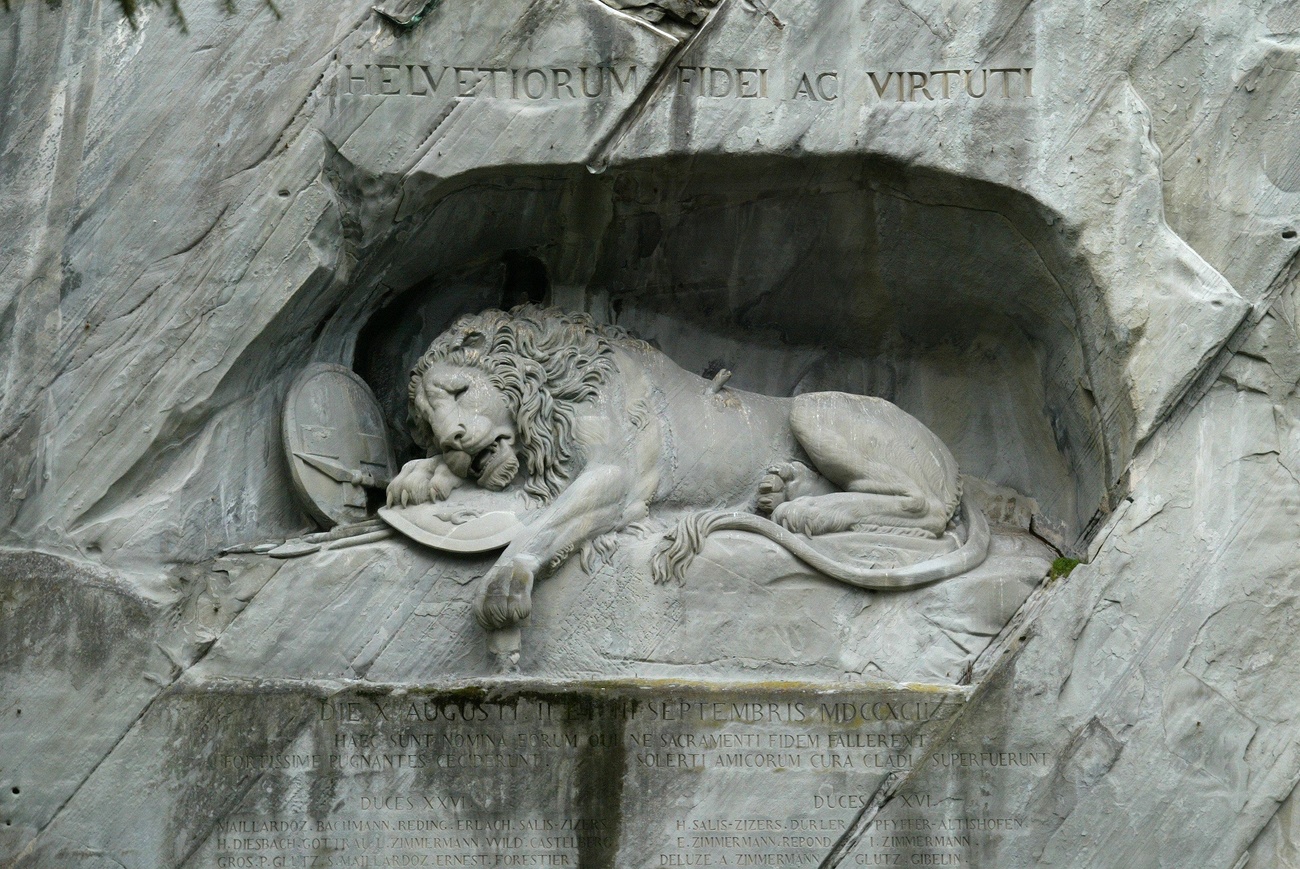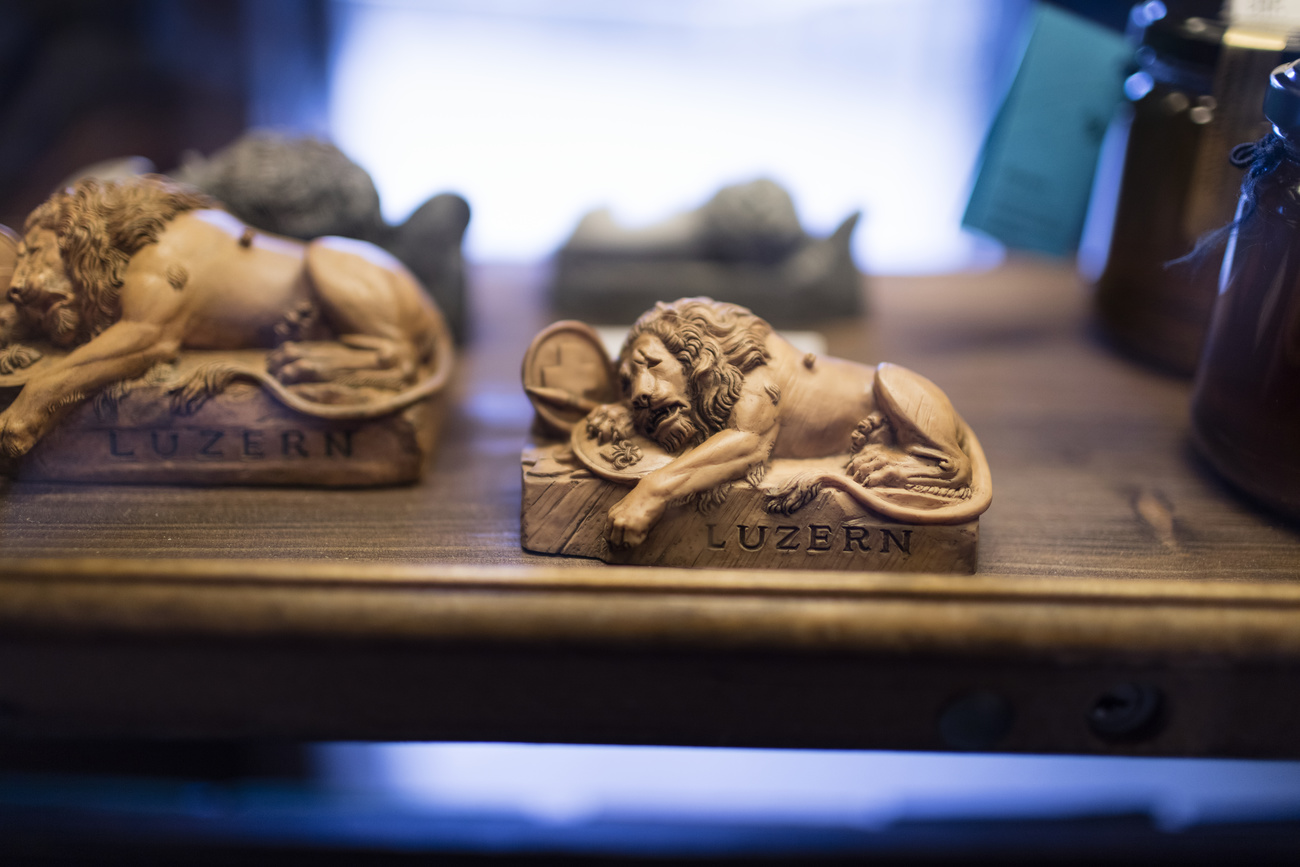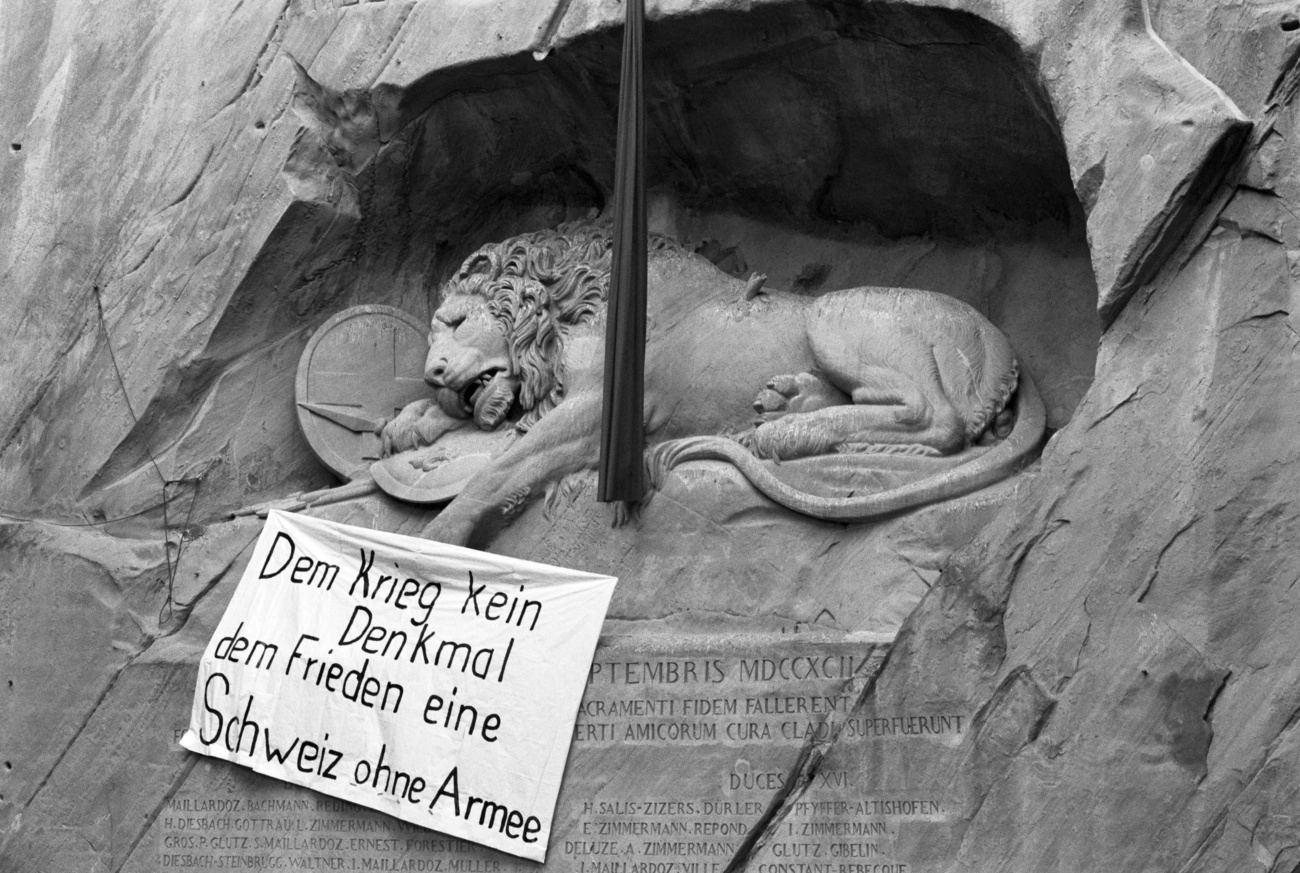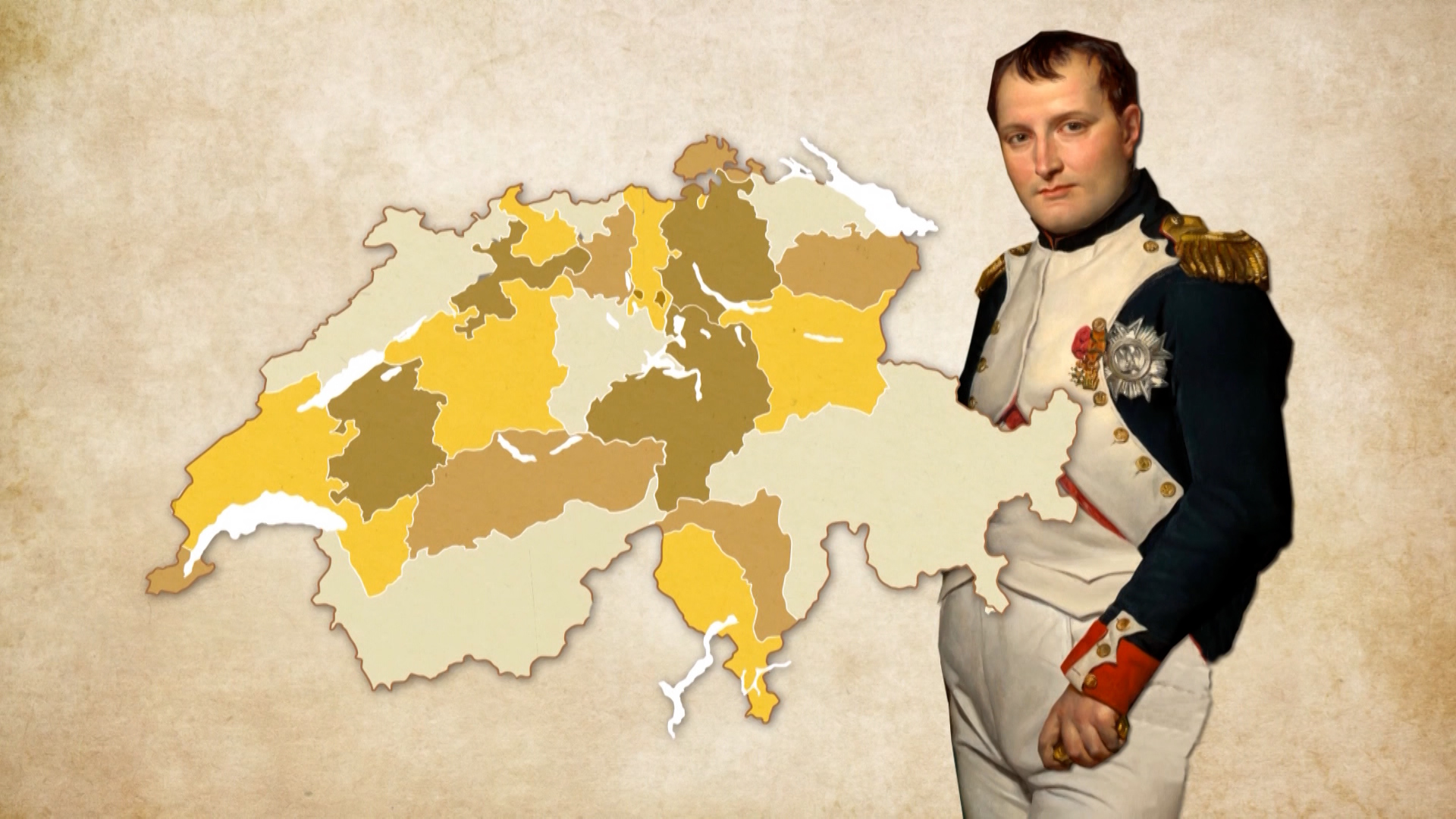The Lion of Lucerne: the controversial tourist attraction

August 10, 2021 marks the 200th anniversary of the unveiling of the Lion of Lucerne, one of the most famous monuments in Switzerland. When it was erected, this memorial honouring the sacrifice of the Swiss Guards defending the King of France sparked controversy. Two centuries later, the monument remains a political flashpoint.
The Lion of Lucerne is situated just outside the old city, up on a hill. The massive sandstone monument of a lion impaled with a spear is about 10 metres long and 6 metres wide and stands behind a pool of water. The proud animal is in its death throes, a front paw resting on a shield adorned with the fleur-de-lys of the French monarchy next to another shield bearing the Swiss cross.
Historical event
Besides these symbols, the monument also bears inscriptions: a dedication in Latin Helvetiorum Fidei ac Virtuti (to the loyalty and bravery of the Swiss); dates, also in Latin; a list of 26 names; and two Roman numerals, DCCLX (760) and CCCL (350).
The monument commemorates a key episode in the French Revolution: the capture of the Tuileries Palace by armed insurgents on August 10, 1792. This important event marked a turning point in the Revolution, with the fall of the monarchy and the beginning of the Reign of Terror, followed by the September massacres.
From the Swiss point of view, this day is associated with the sacrifice of the Swiss Guards who were defending the palace. The names inscribed on the monument are those of officers who died on that day, and the numbers 760 and 350 refer to the number of guards who were killed and who survived, respectively.
Initial controversy
This monument was erected at the request of the Lucerne native Karl Pfyffer von Altishofen, an officer who was back in Lucerne on leave on that fateful day. In 1819, a quarter of a century after the events, he published a book about his comrades entitled An account of the bearing of the regiment of Swiss Guards on August 10 1792. The powerful response to the book motivated him to organise a public subscription in conservative Catholic circles to pay for the erection of a commemorative monument in Lucerne.
“Pfyffer’s book is more hagiography than objective history”, argues Alain-Jacques Tornare, a historian who specialises in the French Revolution and Franco-Swiss relations. “The story was manipulated to fit the image of a Swiss Guard massacred by a pitiless band of revolutionaries.”
The number of victims, in particular, is doubtful. The count of 26 officers killed may be accurate, but the losses in the ranks are clearly exaggerated. Recent historical studies estimate that 300 guards were killed, not 760 as claimed in the inscription on the monument. “The higher number of survivors, and the fact that there were about the same number of guards killed as revolutionaries, certainly relativises the idea of there having been a ‘massacre’ of the Swiss Guard”, Tornare points out.
Apart from the numbers, it was the image of Switzerland conveyed by the Lion that stirred up controversy. The monument seemed to glorify a conservative, counter-revolutionary Switzerland, and this was seen as a deliberate provocation by liberals at the time, some of whom actually tried to disrupt the inauguration and later damage the monument itself. “This was the reaction of a protestant, liberal Switzerland, which preferred internal economic development to military emigration to other countries”, explains Tornare. Furthermore, “liberals saw in this monument a reminder of close ties with a foreign power, when they were trying to create an independent Switzerland.”
Tourist attraction
The controversy didn’t prevent the Lion of Lucerne from becoming a tourist attraction. “Everything was done to create a perfect setting”, says the historian. “Surrounded by its pool of water and English garden, this monument carved out of the rock really embodies the romantic sensibility of the time.”

He adds that “the monument was marketed to the public by means of some astute merchandising with the sale of little sculpted lions. Funnily enough, such a commercialisation was very modern considering the archaic version of history it expressed.”
The idea worked with tourists flocking to the site in the 19th century. Among them were notable artists and writers. Mark Twain described the Lion as “the most mournful and moving piece of stone in the world”.
Political associations
The notoriety of the Lion of Lucerne also extended across the Atlantic becoming the model for the Lion in Oakland Cemetery in Atlanta, in homage to the Unknown Confederate Soldier. Like other monuments in the American South, this one has been vandalised in the wake of the “Black Lives Matter” movement.
Nothing like this has happened in Lucerne but the historical context of the monument may become an issue. Seen as a monument to the counter-revolution, the Lion of Lucerne became a rallying point for extreme right-wing movements in the 1940s. This happened again in the period 1989 to 1992, when a nationwide vote on Switzerland joining the European Economic Area created a stir.
At the time, the city government of Lucerne took steps to prevent the monument from becoming a political flashpoint. “Everything feasible was done to tone down the Lion, and make it harmless”, recalls Tornare. “Explanatory notes were added – as has been happening more recently with numerous controversial statues. The space was used for concerts, to avoid demonstrations gathering there. The city authorities became more strict about any public meetings there. In 1992, I was denied official authorisation to give a lecture there for the Alliance Française in Lucerne.”

Three decades later, the situation remains calm. But could people get worked up again about the old lion? “It could return if vigilance is relaxed”, thinks Tornare. “Any nationalistic movement needs places it can identify with. In Switzerland, there are not too many of those around. I can think of only two: the Lion of Lucerne and the Grütli meadow.”

In compliance with the JTI standards
More: SWI swissinfo.ch certified by the Journalism Trust Initiative











Join the conversation!